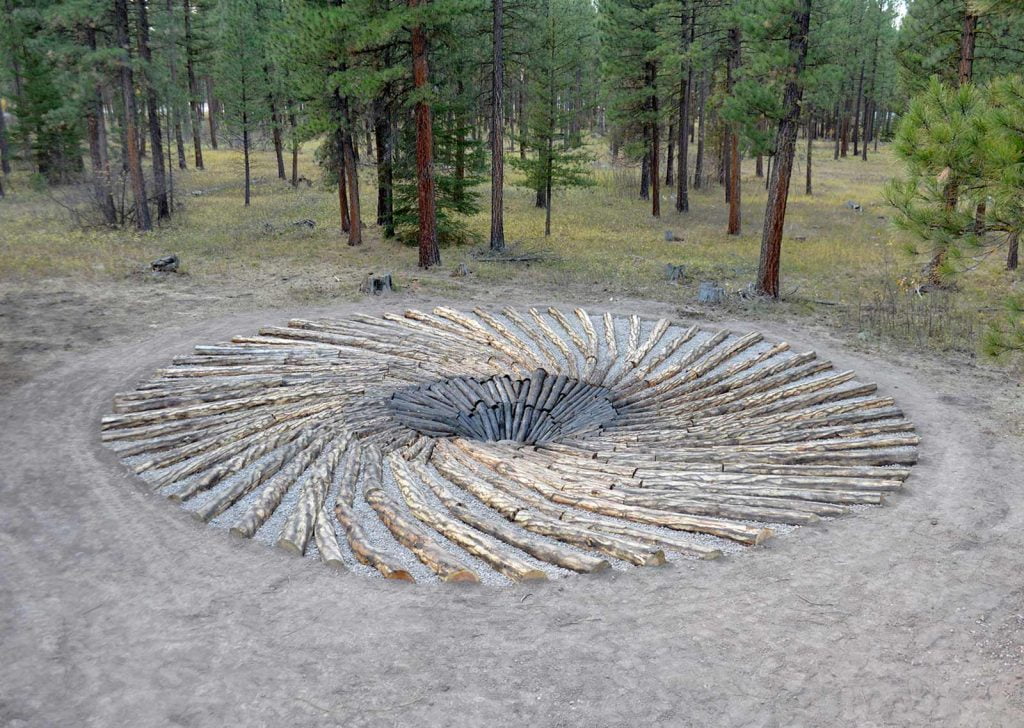Chris Drury – Wandering: earth, art and context
May 9, 2018 19.30 – 21.00 • Studio 3, Dartington Space, Totnes, Devon TQ9 6EL
Chris will talk about his diverse practice over 40 years, working and collaborating with architects, planners, scientists, ecologists and small indigenous communities to make work which has an underlying ecological concern, deeply rooted in place and relevant to many concerns of today.
Chris Drury is a British environmental artist. His body of work includes ephemeral assemblies of natural materials, in the mode associated with Andy Goldsworthy, as well as more-permanent landscape art, works on paper, and indoor installations. He also works on 3D sculptures (three-dimensional).
Some of Drury’s lasting works are “cloud chambers”, darkened caverns constructed of local rock, turf, or other materials. Each chamber has a hole in the roof which serves as a pinhole camera; viewers may enter the chamber and observe the image of the sky and clouds projected onto the walls and floor. On paper, he uses a variety of unusual media—notably mushroom spore prints, dung, and peat—as a source of color and patterns, which he might overlay with text or fingerprints, or underlay with maps or other geographic images. More recently, Drury has produced works associated with the body, working in residence with hospitals and incorporating echocardiogram data and blood into his art.
 Chris says: ‘I am an environmental artist, making site specific nature based sculpture, often referred to as Land Art or Art in Nature. I also work in art and science. I make installations inside and make works on paper, works with maps, digital and video art, and works with mushrooms.
Chris says: ‘I am an environmental artist, making site specific nature based sculpture, often referred to as Land Art or Art in Nature. I also work in art and science. I make installations inside and make works on paper, works with maps, digital and video art, and works with mushrooms.
My work makes connections between different phenomena in the world, specifically between Nature and Culture, Inner and Outer and Microcosm and Macrocosm. To this end I collaborate with scientists and technicians from a broad spectrum of disciplines and use whatever visual means, technologies and materials best suit the situation.’
Drury has uncovered ways to connect to some part of the contemporary world which otherwise would not see itself as necessarily related to the language of land art, nor for that matter the land. Thus, across much of this work, science…informs Drury’s exploration of flow and change, overlaying how complexity’s patterns are found inside and on the surface of our bodies, in plant life, through habitat and landscape itself to the planetary systems found in the weather and oceans. Fourth Door Review 8
Drury’s works demonstrate a political engagement with climate change grounded in scientific research that already challenges comprehension when it extends into limits of particle physics and chaos theory. Exploring the aesthetics of such complexity, the art responds imaginatively to fragile habitats while also playing with contrasts of scale which evoke a metaphysical fascination with the microcosm and the macrocosm. The key to this appeal lies in a delicate balance between immersion in an environment and the objective study of universal patterns. from ‘How to Draw the Wind’ @ Courtauld Blogs
Chris is also leading a short course, with writer Kay Syrad at Dartington from Monday October to 30 to Friday November 3. For further details visit https://art-earth.org.uk/context-and-form-art-and-writing/.
For more information contact Richard Povall.


